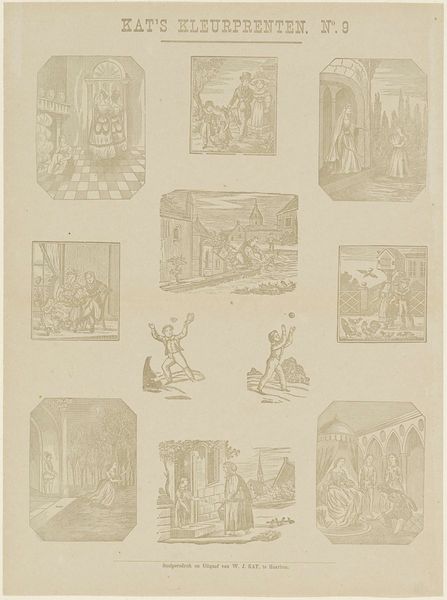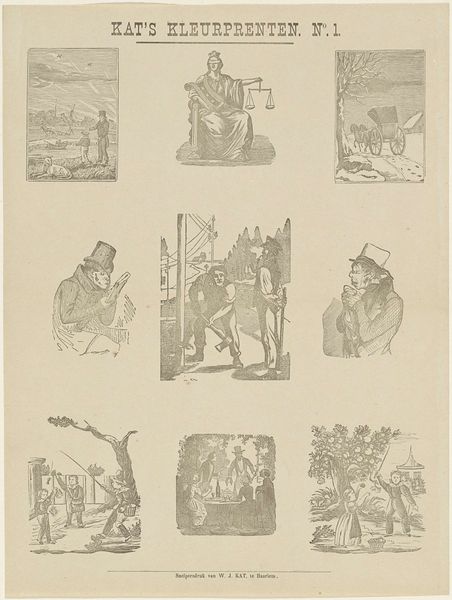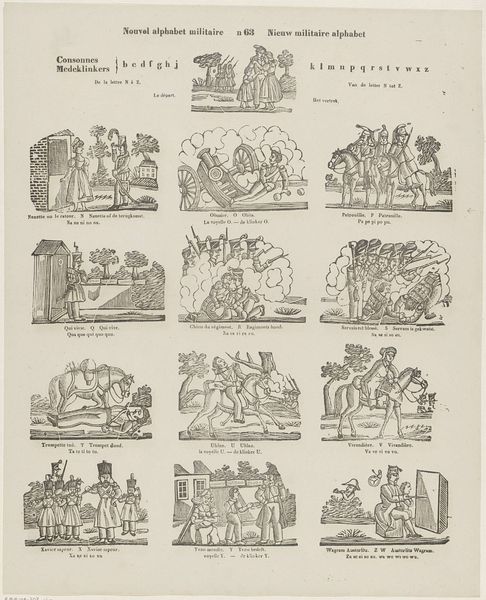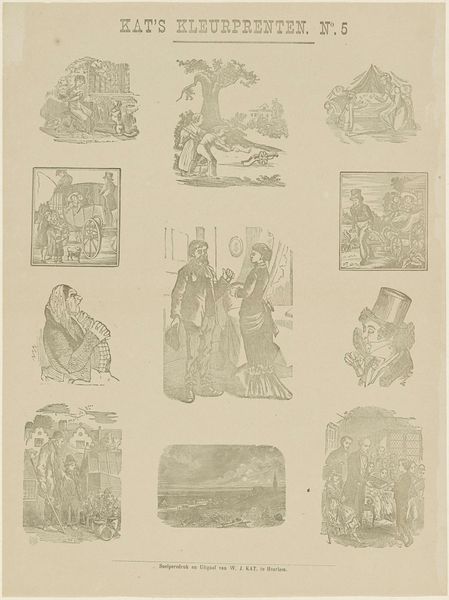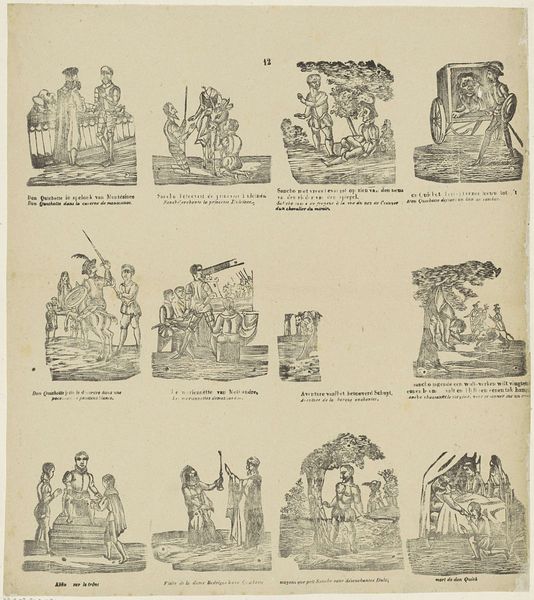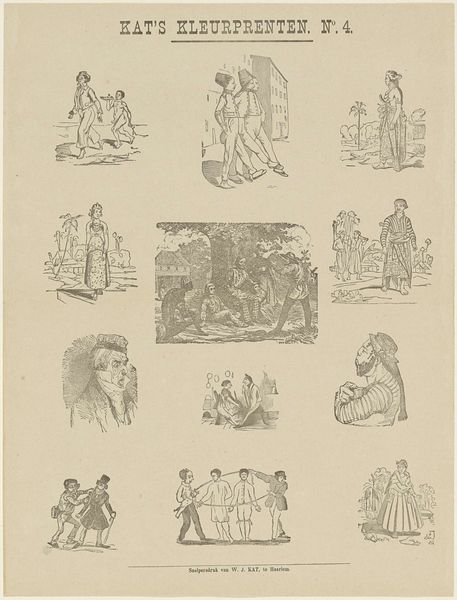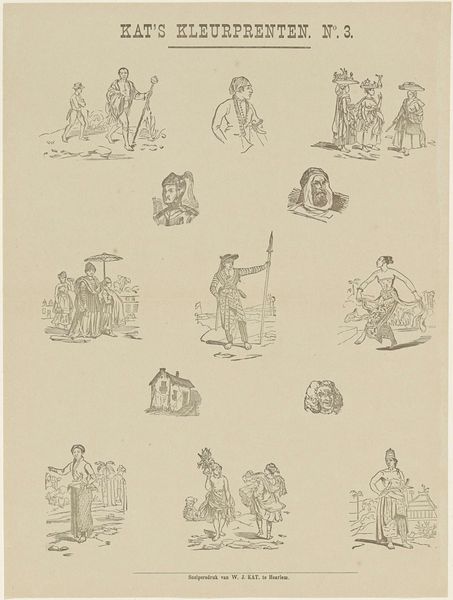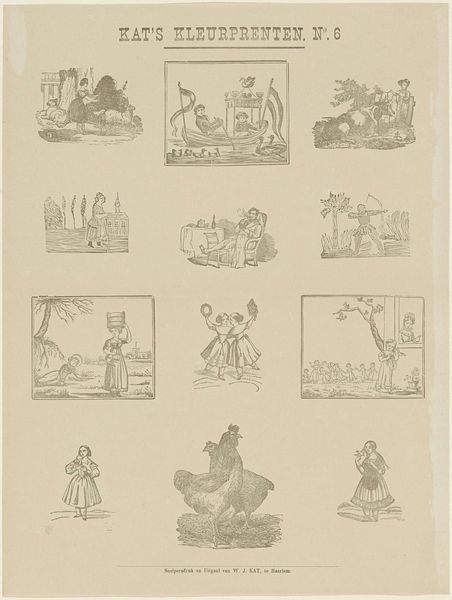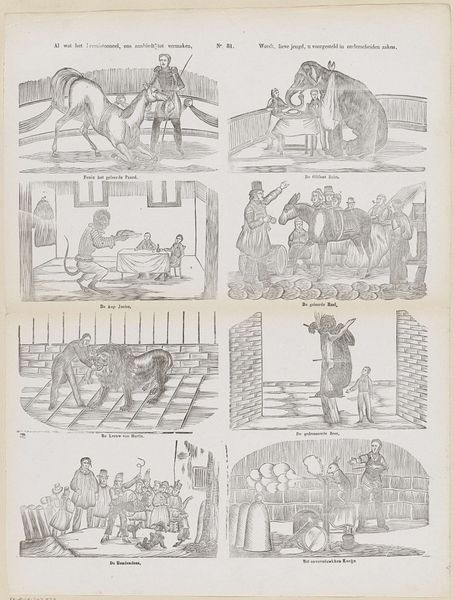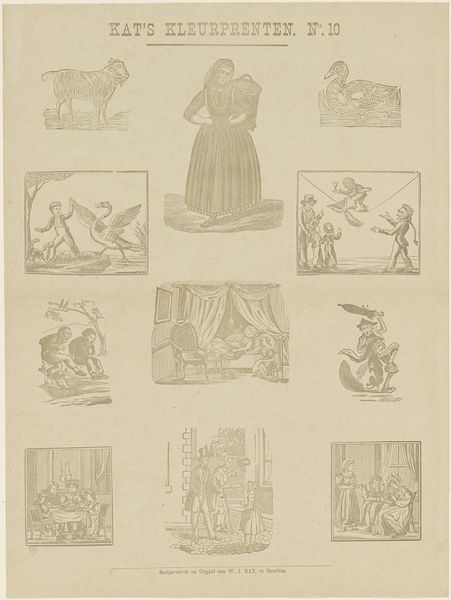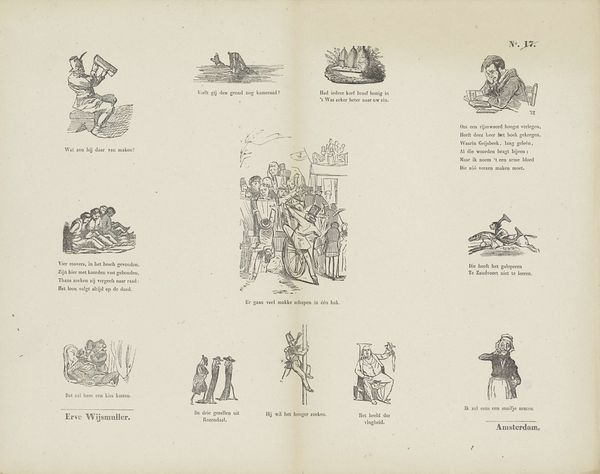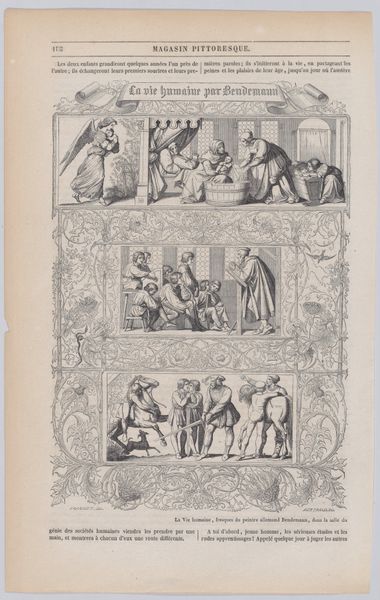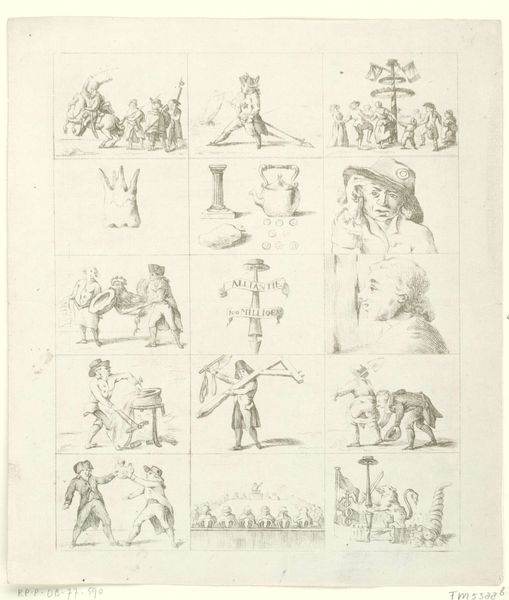
drawing, print, etching, paper
#
drawing
#
narrative-art
# print
#
etching
#
landscape
#
etching
#
figuration
#
paper
#
genre-painting
Dimensions: height 399 mm, width 297 mm
Copyright: Rijks Museum: Open Domain
Editor: This is "Verschillende voorstellingen" by W.J. Kat, dating from between 1862 and 1882. It’s a drawing and etching, printed on paper. It’s quite intriguing - a collection of small narrative scenes. How do you interpret this work? Curator: From a materialist perspective, I see an emphasis on accessibility through mass production. The printmaking technique, particularly etching, allows for multiple reproductions, suggesting an intention to circulate these images widely. Consider the paper itself—its production is tied to specific labor practices and its cost would have determined who could access these images. What narratives are presented here? And who would have been able to purchase this sheet? Editor: There seem to be genre scenes - domestic interiors, landscapes, children playing, some animals… a real variety. Was this meant for educational purposes, perhaps? Curator: Precisely! The clustering of scenes brings into sharp focus the social function of reproductive media, perhaps like printed school sheets to illustrate domestic virtues. Notice, there's even a bear. What raw materials were needed for its reproduction? And what value judgements about class and nature did this project promote through such accessible and seemingly innocent imagery? Editor: I didn’t think about the implications of producing a print like this. So it's not just the image, but the materials and process that tell the story? Curator: Absolutely. We are challenged to trace its route: the paper mill and the workshop of Kat and how these converge in your hands today. Editor: That definitely gives me a lot to consider. It's fascinating to think about all the different levels of production involved. Curator: Indeed, analyzing the layers reveals its role in shaping 19th century social values. We should consider the ethics surrounding it’s materiality.
Comments
No comments
Be the first to comment and join the conversation on the ultimate creative platform.
